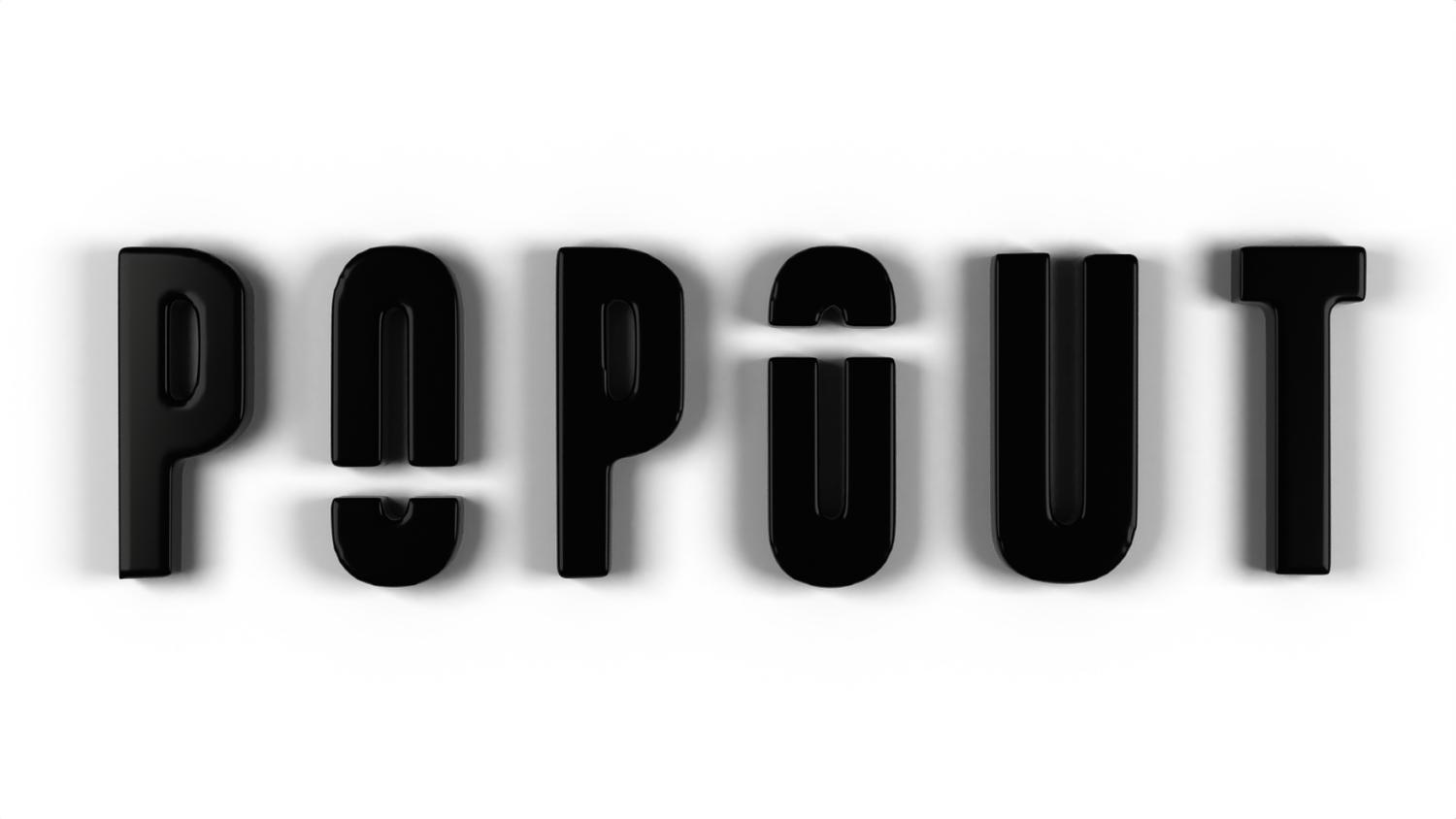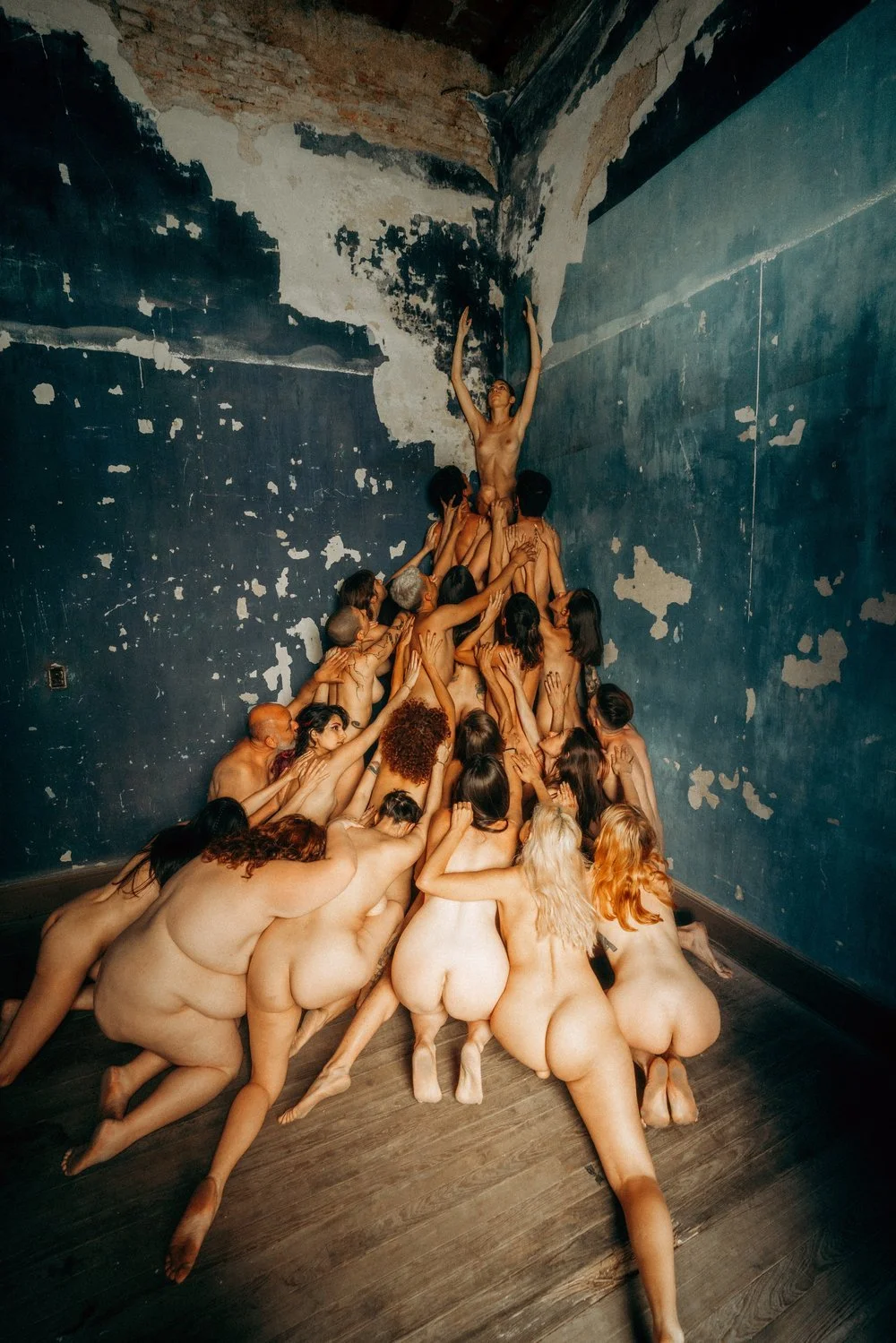artist highlight
POPOUT, interviewed photographer Rafael Avcioglu, from Chicago Illinois, currently based in Los Angeles, CA.
We were able to gain a glimpse into his creative process, inspirations, and the experiences that has shaped his successful series Human Connection.
How did you get started in photography?
I stayed away from photography classes in high school, but I had to take a photo one class for my BFA at Michigan State University. When I entered photo one during undergrad, I knew very little. I didn't even know how to use a DSLR (digital single-lens reflex camera). I would like to say I picked up the camera and it was like, I knew - but I didn't.
I was using photography as a graphic designer to cut out the middleman and do my own photography for graphic design campaigns. Into my third year of college, I had taken a color photo class which is when I started to really dive into photography a little bit more. It was a gradual build into an obsession.
What moment did you realize that photography was what you were going to do long term?
Towards the end of my junior year I applied to a graphic design internship as a designer, but I didn't get it. The person who ran the internship was a part of Michigan State's Design Center. He said that my graphic design work would not cut it for the design center but my photography would. He told me that I was really talented at it. There was no opening slot for a photographer, but he created one just for me.
Looking back, I had never received praise like that. I always received, ‘You have so much potential, but you keep fucking up or, you could be so much, but you seem to want to take the easy way out.’ So to receive positive praise from someone outside of family or good friends was kind of like wow! Especially from these people I admired. I think that's when I had this light bulb moment.
How did you come up with your most recent series ‘human connection’?
Our generation has started to understand the effects that phones screens, and isolation have on us. We are a generation constantly focusing on this ‘separation.’ Like, are we too lonely? Are we depressed?
When COVID started, I did long distance with my now wife. We were in two different countries for 10 months. During that time a lot was happening. In the U.S, there was an international awareness with George Floyd humanitarian abuse, which was another layer of overall separation - racial and classist.
I thought, how do I show people warmth and togetherness? At the time the images didn't have the title or label of Human Connection, it just grew into this series subconsciously. With all those factors of separation it made me want to focus heavily on the frame. I was influenced by museums and fine art galleries in Paris. I think that moment and the summer of 2020 was when everything clicked for me. I was very determined to keep trying to hit that mark. Once I had between 10 or 15 photos of a similar style of bodies naked or half naked in nature or in some city environment, then I could label it a series and I called that series Human Connection.
How did the preparation work for this series?
Integrating more than four people started in my second round In Paris after curfews were lifted. It started as a four-person image. I made everybody stand in different places while using the tripod to make the viewer believe that I was shooting with 20 people instead of four people.
I was in Spain after doing a few of these shoots and saw how incredible they looked. On the plane flying from Spain to Paris I began to follow different boudoir photographers to find different willing models who were often modeling half or fully nude.
In Paris, the process of getting 50 people saying yes, but then 8 of them showing up was an often occurrence. Similarly to other projects that I had done in photography, it quickly became something that I was going to be doing every few weeks. I became more and more confident because I knew from the beginning it was going to look incredible. I was very honest and up-front with the models, telling them exactly what they were going to be doing.
When shooting with 1 person or with 2 people you can kind of flow and say ‘oh I don't really have much of a plan - I just know.’ But when you're working with more than 6 people the pressure is really on, especially when you're potentially in somewhat of a public space. There were so many added elements, especially with the rooftop in Paris.
It was just a lot of anxiety elements that really put more pressure on me to not fail. You couldn't fail in front of 15 naked models. I felt like I really had to make sure that every one of those shoots was a damn-near win and that something was going to come out of it.
There could be some loose ends but for the most part there needs to be like 10, if not 15, very reasonably drawn-out ideas. There could be 40 people who may come but also maybe don't come — so here's the idea for 10, and here's the idea for 40.
So, yeah, lots of preparation.
What have you learned through this process?
One of the biggest things I've learned is that humans really do want to be free in this way. Humans often feel incredibly suppressed. Even the ones that are privileged. We're all feeling one way or another like we often need experiences like this to break free, breathe, live and experience life to the fullest and in a very real way.
There were participants who came from different cities and participated across different country borders. The insane amount of similarities between the types of people that would participate, made me realize that a lot of us genuinely want the same kind of things and that we're not so different. I think that was a beautiful realization for me.

“since the project began, I've had models who have gotten tattoos from the experience. I've had models who have become best friends in the experience. models who have traveled as far as Istanbul to Argentina for the experience.”
What advice would you give emerging photographers?
One thing is to not to ignore video. The earlier you can get into it the more successful you're going to be. You will be much more ‘hireable’ for those kinds of jobs, even when photography jobs are not coming through.
Secondly, I would say create a commercial portfolio by adding agencies and commercial brands - something very clean. Make sure you have various style portfolios so that you're not sending out your ‘grungy anarchist stuff’ always.
The third point I would make is to ask yourself the question of, would you rather be one of one, one of a hundred, one of a million or one of ten million or one of a hundred million? I think that's always been my goal from the beginning - to create a work that is trying to hit a level of different.
I'm definitely not one of one, but my goal is to continue to further myself. To eventually have that stamp of ‘that is a Rafael photo!’ I haven't hit those accolades in my book that label me as an absolute success, but I do think that I'm pretty pleased with the journey.
rafael
POPOUT has selected Rafael as our POP Artist of the month because he has captured riveting images that inspired our team to our core.
Rafael thank you for sharing your art with the world. We encourage you to keep going!
-POPOUT tribe
CONNECT WITH Rafael
CONNECT WITH Rafael
— Credits: interview conducted by Aris Theotokatos, images courtesy of Rafael, Editor Aalyiah Heath.














